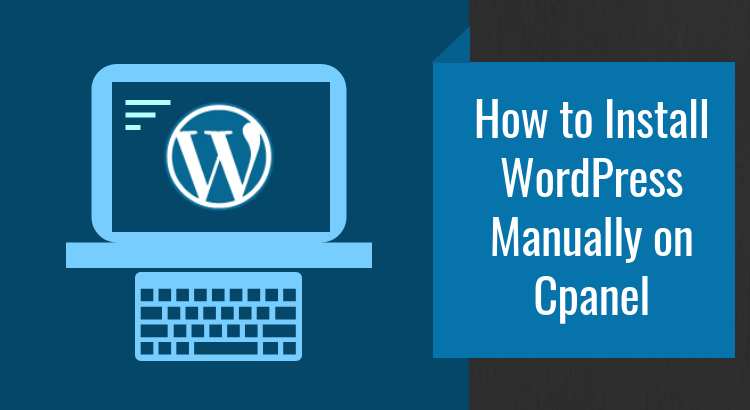What is WordPress?
WordPress is an open source Content Management System, which allows users to build dynamic websites and blog. WordPress tutorial is the most popular blogging system on the web and allows updating, customizing and managing the website from its back-end CMS and components.
wordpress tutorial for beginners launched as a way to make it easier to add content to websites without needing to know any code. You don’t need to know any code in order to create a website with WordPress.
Here we will explain step by step WordPress tutorial we will show how easy it is to create one.
What is Content Management System (CMS)?
The Content Management System (CMS) is a product which stores every one of the information, for example, content, photographs, music, documents, and so on and is made accessible on your site. It helps in editing, publishing and changing the content of the site.
WordPress Installation
WordPress tutorial is well-known for its ease of installation. Under most circumstances, installing WordPress tutorial is a very simple process and takes less than five minutes to complete.
Things to Know Before Installing WordPress
Before you start the installation, there are a few things you need to have and do.
- Contact your web server via FTP or shell
- Capacity to create MYSQL databases
- Require Text editor
- An FTP Client (optional)
- Need web browser of choice
Things You Need to Do to Installing WordPress
- Checking to guarantee that you and your web have the minimum requirements to run WordPress.
- Download the most current version of WordPress.
- Unzip the downloaded file to a folder on your hard drive.
- Make a secure password for your Secret Key
- Keep this site page open so you have it helpful during the installation
Basic WordPress Installation Steps
If you want to create a WordPress website, this wordpress tutorial for beginners is for you. In this wordpress tutorial, you will learn how to install WordPress on cPanel.
To setup WordPress manually on cPanel, you will have to follow these steps:
- Download WordPress installation files.
- Upload WordPress files using cPanel’s File Manager.
- Create a MySQL database.
- Run WordPress installation wizard.
Step 1: Download WordPress Installation Files.
- Download WordPress from the official site of the WordPress. Click Download WordPress button and start the Download. Unzip the downloaded file to a folder on your local computer.
Step 2: Upload WordPress Files using File Manager.
Upload WordPress to Hosting Account.
There are few ways to uploading WordPress to a hosting account. One of them is by using cPanel’s File Manager:
- Access cPanel and open File Manager.
- Open public_html directory and press Upload button.
- Press Select File and choose WordPress.zip archive you have downloaded in the first step.
- Once its uploaded status bar will turn green. Press Go Back to “/home/username/public_html” button.
- Extract.Zip files.
- WordPress files are in the folder named WordPress. Unless you want to access your blog via http://yourdomain.com/wordpress you need to move WP files to the public_html In order to do so, access WordPress folder, select all files and click on Move button.
- Delete WordPress from file path that you want to move files to and press Move File(s)
- Finally, select WordPress folder and .zip archive while holding the SHIFT key and press Delete
Step 3: Create a MySQL Database
There are 2 different ways to make a MySQL database on cPanel. You can either do this physically on MySQL Databases section or use MySQL Database Wizard. The second choice is more easy to use:
- Log into cPanel.
- In the Databases section, click the MySQL Database Wizard icon.
- Create A Database, enter the database name and click Next Step.
- Create Database Users, enter the database username and password and click Create User.
- Add User to the Database, click the All Privileges checkbox and click Next Step.
- Complete the task, make note of the database name, username and password, as you will need them to configure wp-config.php.
Step 4: Configure wp-config.php
The wp-config-sample.php file contains the database information and tells the WordPress application which database to pull information from.
WordPress tutorial for beginners for the wp-config-sample.php file can be found in File Manager in the folder where WordPress is installed. To modify the file:
- Log into cPanel.
- Click on the File Section, open the File Manager.
- In the pop-up box, select Web Root and check the box for Show Hidden Files (dot files), then click Go.
- File Manager from the left navigation, click public_html to increase the folder.
- Click the folder containing the WordPress installation.
- On the right side of the File Manager screen, locate the wp-config-sample.php
- Right click on the file, select Rename and change the name of the file to wp-config.php. Click the Rename File
- click on the wp-config.phpfile and select Code Edit. When the file opens, look for the following information:
define(‘DB_NAME’, ‘database_name_here’);
/** MySQL database username */
define(‘DB_USER’, ‘username_here’);/** MySQL database password */
define(‘DB_PASSWORD’, ‘password_here’);
- When done editing, click the Save Changes button, then close the file.
Step 5: Run the Installation
Open a new browser window and go to the installation page to run the installation script.
You should now see a welcome page that says “Welcome to the famous five minute WordPress installation process!”
Step 6: Complete the Installation
On this page, fill in the fields for:
- Site Name
- Username
- Password (needs to be entered twice)
- Email address (login information will be sent to this email address)
- Select whether or not to have the search engines index the site
Click Install Now, and you should be taken to the final screen, showing the following message:
Success! WordPress has been installed.


Recent Comments